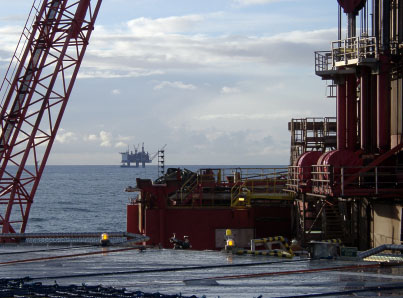Transforming a hostile conduit
into a reliable network.

In an electrified world, powerlines are both ubiquitous and universal. But since powerlines are not designed for communications, they're not inherently built for the transmission and reception of data. Specific challenges include:
- Severe signal attenuation that varies widely across the useable frequency band
- Substantial noise from heavy machinery, variable frequency drives (VFDs), switching power supplies, ballasts, etc.
Without the right solution, these types of challenges cause bit errors to occur at unacceptably high rates, as actual error-free throughput is only a fraction of the raw data rate.
Solving multiple challenges in the powerline:
Through a systemic and integrated approach.
On the powerline, most wideband systems will exhibit improved noise immunity over a narrowband system. However traditional approaches, such as spread spectrum and OFDM, do not solve the difficulty of network communications in the presence of constantly changing noise and frequency-dependent attenuation.
Adaptive's proprietary powerline communications technology is based on a hierarchical design, where each level is optimized to address specific challenges. The additive effect of this multilevel optimization provides immunity from powerline attenuation and noise — while maximizing data integrity, throughput, error-free delivery, multipoint network performance and response-time speeds.
Wideband Modulation
Our technology is based on a unique physical layer that offers greater noise immunity to both noise and frequency-dependent attenuation than technologies based on underlying narrowband approaches (e.g., OFDM). This wideband technology distributes communication effectively over the total available bandwidth, ensuring optimal communications over the chosen channel.
Rapid Synchronization
By minimizing packet overhead and enabling the transmission of small packets, rapid synchronization greatly enhances immunity to noise. Adaptive Networks is able to achieve this despite low signal-to-noise ratios and incoming signal distortion. With our low-level link protocol, data is transmitted in short frames — with the start of each frame quickly detected in a parallel synchronization process.
Adaptive Equalization
Since powerline conditions can change within a few milliseconds, the receiver must be able to adapt to these changing conditions. Our unique use of adaptive equalization in the physical layer, providing intelligence at the receiver itself, is another key advantage of the Adaptive Networks protocol.
By concentrating the signal processing at the receiver, we optimally correct for frequency-dependent attenuation and noise of the channel. This on-the-fly equalization eliminates the need for transmitter training by the receiver and its associated latency (as with OFDM). As our unique low-level link protocol is built on short frames, the receiver can adapt on a frame basis — enabling all nodes on a network to hear any transmitter.
Segmentation & Reassembly (SAR)
Only a certain amount of contiguous information can be sent on a powerline before it is almost certain a transmission will be corrupted. Our low-level link protocol uses segmentation and reassembly (SAR) to break up the higher level packet into short frames.
Error Control Coding
To augment this reliable transfer of control gained through SAR, Adaptive's protocol adds rigorous error correction and detection. Error detection, forward error correction (FEC) and automatic repeat request (ARQ) — developed specifically for the powerline environment — combine to ensure the integrity of the data. The resulting powerline-based performance for a large, multinode network is exceptionally reliable and robust, with optimal use of bandwidth and low decoding delay.
Deterministic Token Passing Protocol
Media access algorithms developed for dedicated wire, such as carrier sense techniques and standard token passing, are not viable solutions for the powerline.
It is extremely difficult for carrier sense algorithms to distinguish between powerline noise and signal, which impairs the carrier and/or collision detection needed to ensure the integrity of multipoint networking. Standard token passing is also susceptible to corruption of the transfer of control by powerline noise and signal distortion.
To remove this limitation, Adaptive Networks has developed a noise-immune token passing protocol to provide the requisite level of deterministic control/transfer, while maximizing data throughput and minimizing latency. An essential component of this technology is the transfer of the token via a three-way handshake. This ensures an orderly transfer of control without loss of the token, which acts as an arbiter for any ambiguities in the multinode network.